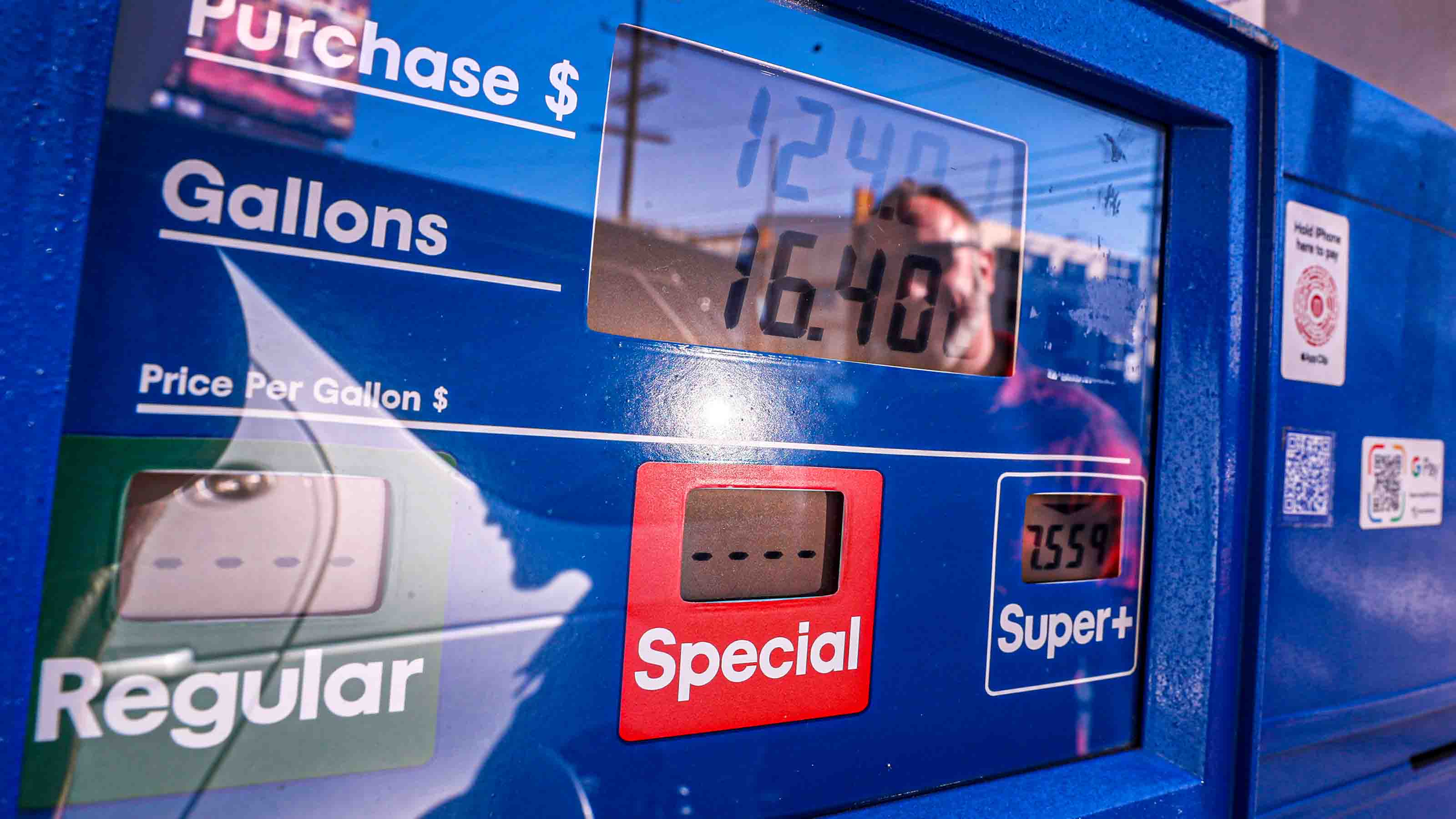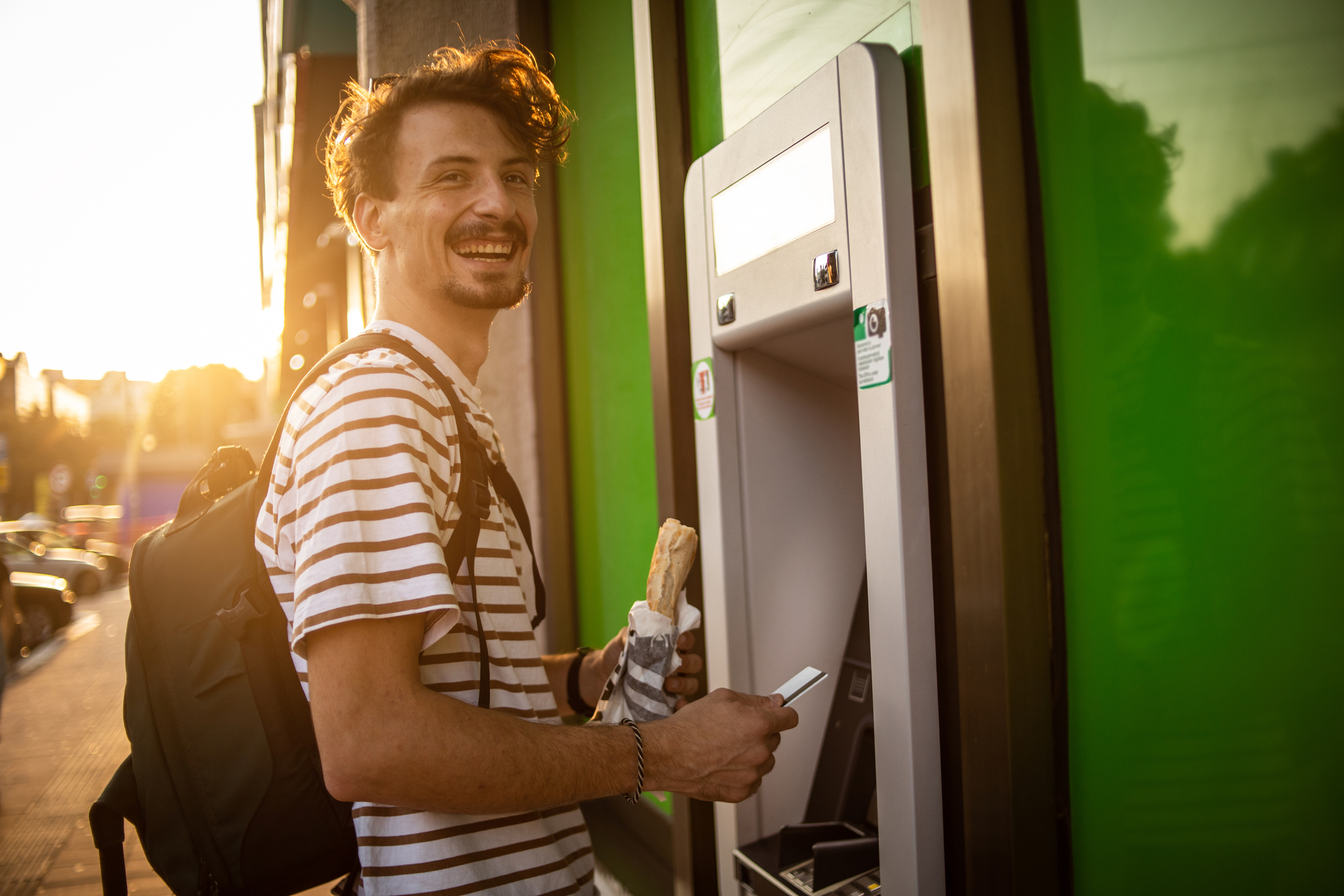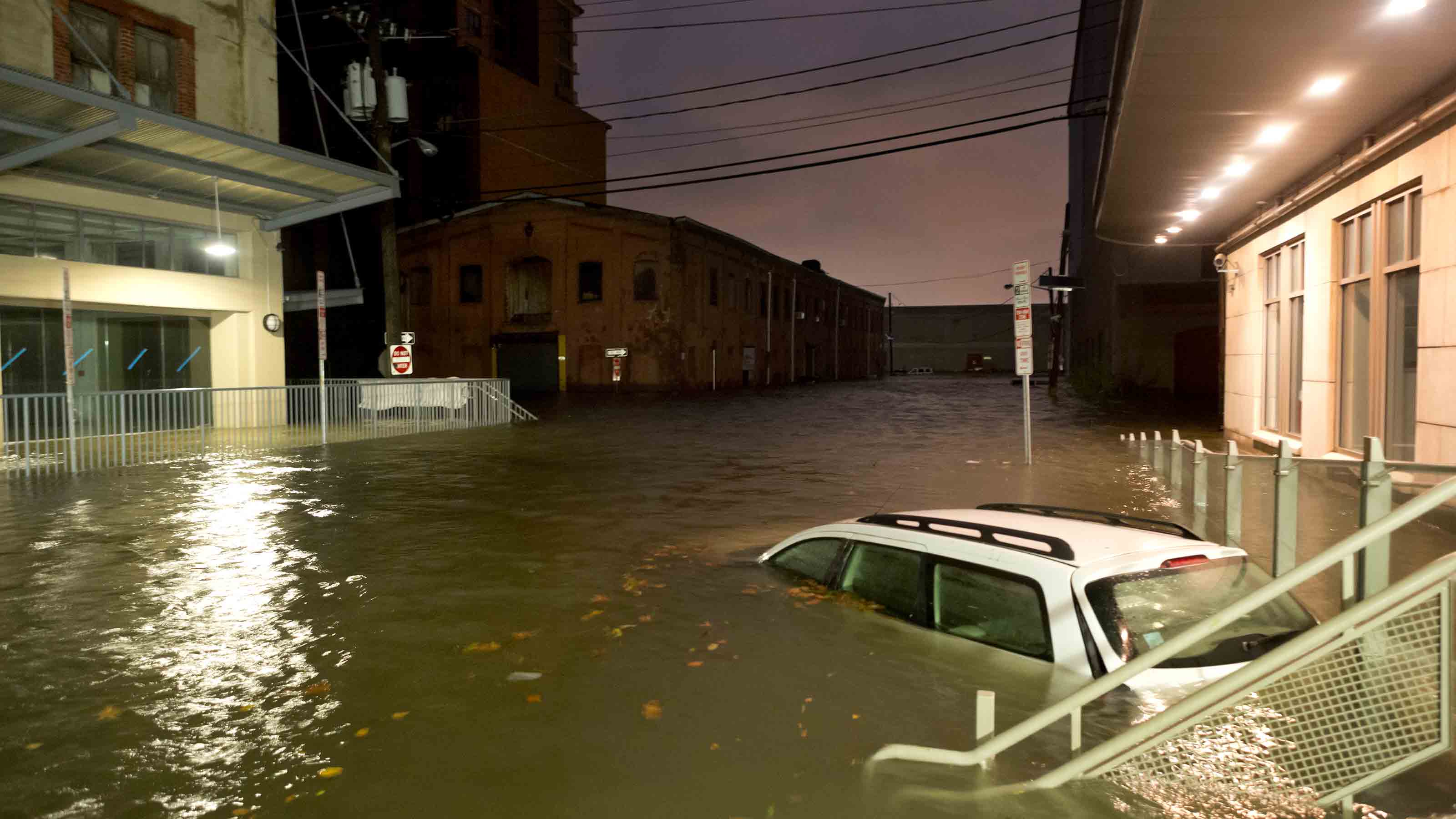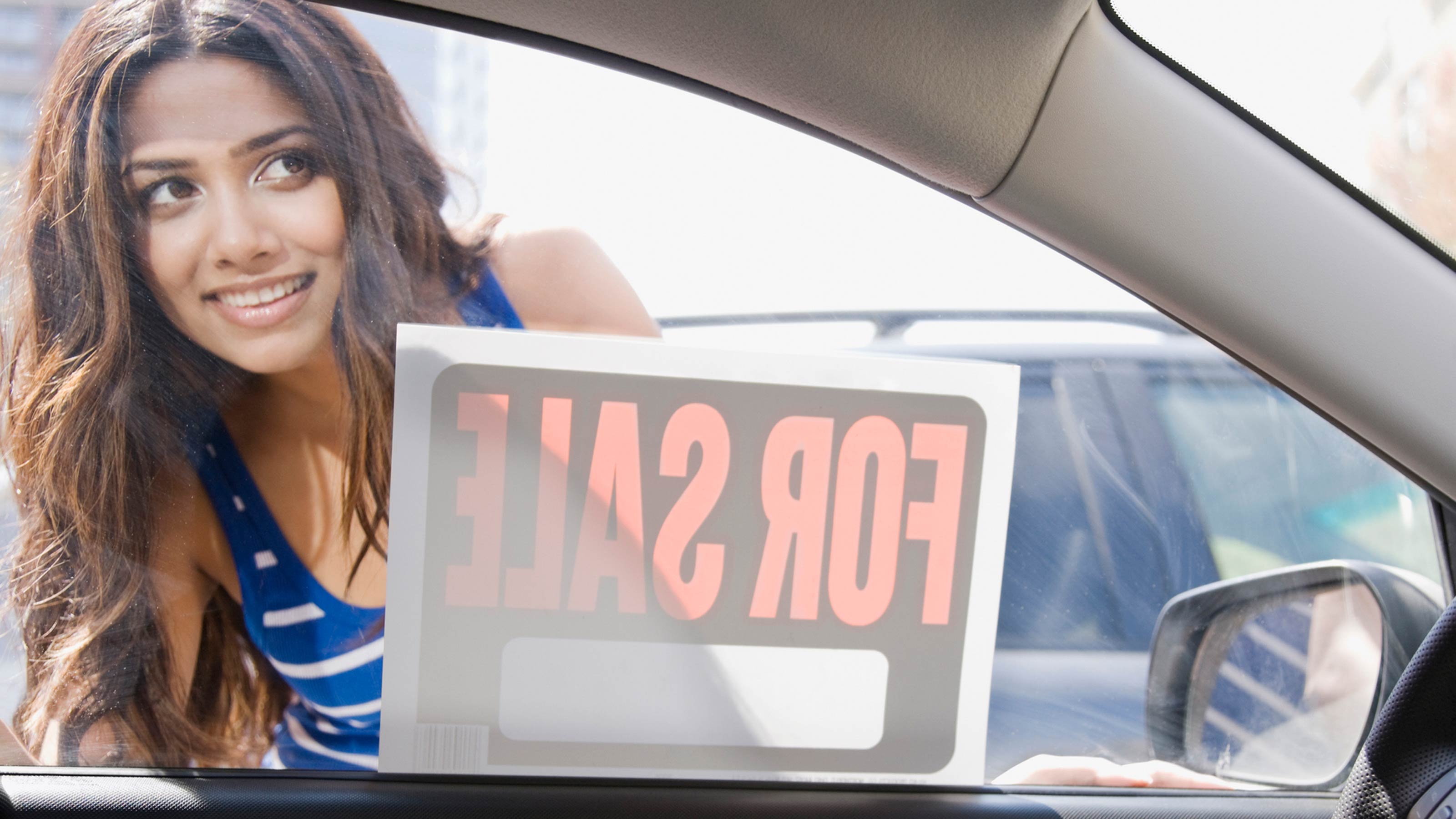Ditch Your Car, Save a Fortune
I've saved about $3,000 a year by going carless. Here's how you can do it, too.

In 2011, I parted ways with my car, a 2003 Kia Spectra that my grandparents had given me as a college graduation gift. After eight years of hassle- and payment-free driving, the car wouldn't start one morning before work. The mechanic's diagnosis: A small hole in the transmission had been causing fluid to slowly leak. The financial damage: It would have cost between $4,000 and $5,000 to repair. Cha-ching!
Use Our Tool: How Much Can I Save Biking to Work?
I was shocked when I heard that dollar amount. I immediately questioned whether sinking that much money into an eight-year-old car was worth it. There was no guarantee it wouldn't require another just-as-costly fix soon afterward. Also, I had been saving up to buy a home, so the repair would have taken money away from my stash for a down payment. That was a sacrifice I didn't want to make. When I considered how easy it would be to get around town with my own two feet and plenty of public transportation (I live in the Washington, D.C., metro area), I decided to go carless.
Carless Savings: About $5,000 a Year
The financial benefits of not owning a vehicle were immediate. Because I donated my car to the Purple Heart Foundation, I earned a tax deduction of about $200. The charitable organization even towed it away for me, free of charge.

Sign up for Kiplinger’s Free E-Newsletters
Profit and prosper with the best of expert advice on investing, taxes, retirement, personal finance and more - straight to your e-mail.
Profit and prosper with the best of expert advice - straight to your e-mail.
One of the biggest costs of owning a car—and perhaps the biggest hassle—was parking. The garages near my office charge $20 a day, on average. I typically drove to the office two or three days each week. I'm guessing I spent nearly $2,000 a year to park at work.
If I opted to take public transportation to work, I still had to figure out where to leave the car during work hours, which had gotten extremely frustrating. I didn't get to my neighborhood metro station early enough—which apparently meant before dawn—to use the public parking lot before it filled up. But if I left my car at my apartment building, where I didn't have designated parking, or on the street in my boyfriend's Northwest D.C. neighborhood, where I didn't have a parking permit, I often came home to a $25 parking ticket (and a headache). If I got a ticket just once a month, that would add up to $300 a year.
Cutting out the cost of gas was also huge. I used to shell out $45 every week to fill up my car, which added up to $2,160 a year. (Besides ditching your car, here are five ways to save gas money.)
Another big saving: I no longer had to pay for car insurance, which cost me about $900 a year. (See 5 Smart Money Moves for Young Adults, including how to save on auto insurance.)
All told, that's more than $5,000 I'm no longer spending on a car each year. But I've added some costs to my budget to compensate for my lack of wheels.
Carless Costs: About $2,000 a Year
Fortunately, Kiplinger provides a $50 monthly transit subsidy to help cover my cost of commuting to and from work via the subway or bus. But with my round-trip Metro ride costing $6.70 every day, it's not long before I'm paying out of pocket each month—a total of about $125 a month or $1,500 per year. (A perk to my carless commute is all the exercise I get by walking to and from the Metro.)
When I need a car on short notice or to make quick trips to places such as the grocery store or a doctor's office, ZipCar is great. For membership and damage fee coverage, I pay $135 annually. (Other plans in D.C. are available starting at $6 a month.) The rate to use a car varies based on vehicle type and location, starting at $6.59 an hour. I generally only use ZipCar once a month, at a cost of about $30 per trip. And if I need to fill up with gas while I'm out, ZipCar covers it. (See Smart Spending Tips for Young Adults, including using car-sharing services.)
For lengthy day trips—such as visits to my grandparents' house two hours away for family events—ZipCar isn't the most cost-effective choice. If I were to reserve a ZipCar from noon to 6 p.m. on a Saturday in mid May, for example, it would cost $65.23, including taxes. I can rent a car from Enterprise or Avis for an entire weekend for nearly that amount, if I plan in advance. But then I have to pay for gas and parking for that whole time, too.
A less-tangible cost of not owning a car: the extra time I have to allot to get to and wait for public transportation. On weekends in D.C., I sometimes wait 20 to 30 minutes at the Metro station for the next train.
Carless Conclusions
Not having a car has helped me save a lot over the past few years and achieve major financial goals. Most of that money went toward buying a new house in April. Now the money goes directly into my emergency savings fund.
Of course, going carless won't be the right decision for everyone. Be sure to give yourself a trial run before ditching your wheels. I tested out not having a car for about four months (while mine sat in my mother's garage) before finally donating my car in early 2012.
And while going carless has worked out well for me, I'll most likely buy a new car within the next year or two. I've already started saving for it. Having to travel on foot during inclement weather, plus unexpected subway delays during my morning and evening commutes and having to rely on others for a ride (and catering to their schedules) when public transportation isn't an option has slowly started to wear on me. When the time finally comes, I'll be sure to consult Kiplinger's annual Best Car Values guide, which ranks the year's top new-car models based on performance, safety and value. I want to make sure I'm getting the most bang for my buck because I plan to keep my next car for nearly a decade, too.
Get Kiplinger Today newsletter — free
Profit and prosper with the best of Kiplinger's advice on investing, taxes, retirement, personal finance and much more. Delivered daily. Enter your email in the box and click Sign Me Up.

Browne Taylor joined Kiplinger in 2011 and was a channel editor for Kiplinger.com covering living and family finance topics. She previously worked at the Washington Post as a Web producer in the Style section and prior to that covered the Jobs, Cars and Real Estate sections. She earned a BA in journalism from Howard University in Washington, D.C. She is Director of Member Services, at the National Association of Home Builders.
-
 Fired Up By the Masters and RBC Heritage? See These Homes for Sale By Golf Courses
Fired Up By the Masters and RBC Heritage? See These Homes for Sale By Golf CoursesFive homes for sale near golf courses, for people who can't get enough of the tour.
By Alexandra Svokos
-
 The Economic Impact of the US-China Trade War
The Economic Impact of the US-China Trade WarThe Letter The US-China trade war will impact US consumers and business. The decoupling process could be messy.
By David Payne
-
 Gas-Saving Tips That Actually Work
Gas-Saving Tips That Actually WorkThese are gas-saving tips that will actually work for you and your car this year.
By David Muhlbaum
-
 Debit Cards vs Charge Cards
Debit Cards vs Charge Cardscredit & debt Whether sticking to a budget or reaping big rewards, understand whether debit cards vs charge cards are right for you.
By Ellen Kennedy
-
 Four Smart Steps To Take Before Buying Your First Home
Four Smart Steps To Take Before Buying Your First Homehome Buying your first home can be daunting. Here are four things you need to do years before you start house-hunting to prepare financially for the biggest purchase of your life.
By Andrea Browne Taylor
-
 Want to Lease an EV? The Tax Credit 'Loophole' for That Could Go Away Soon
Want to Lease an EV? The Tax Credit 'Loophole' for That Could Go Away SoonTax Credits If you are deciding whether to lease or buy a car, here's what you need to know about the EV lease tax credit.
By Kelley R. Taylor
-
 The 25 Cheapest Places to Live: U.S. Cities Edition
The 25 Cheapest Places to Live: U.S. Cities Editionplaces to live Have a look at the cheapest places to live in America for city dwellers. Is one of the cheapest places to live in the U.S. right for you?
By Donna LeValley
-
 Car Buying in a Topsy-Turvy Market
Car Buying in a Topsy-Turvy MarketYou need a new car? Good luck with that! What should you do? We've got some answers.
By Katherine Reynolds Lewis
-
 Watch Out for Flood-Damaged Cars from Hurricane Ian
Watch Out for Flood-Damaged Cars from Hurricane IanBuying & Leasing a Car In the wake of Hurricane Ian, more flood-damaged cars may hit the market. Car prices may rise further because of increased demand as well.
By Bob Niedt
-
 Car Buyers: The 3-Day Grace Period Is Just a Myth!
Car Buyers: The 3-Day Grace Period Is Just a Myth!Buying & Leasing a Car Many car buyers think they have three days after making a purchase to return a car. Here’s where they’re going wrong, and what they should do instead to get a decent used car.
By H. Dennis Beaver, Esq.